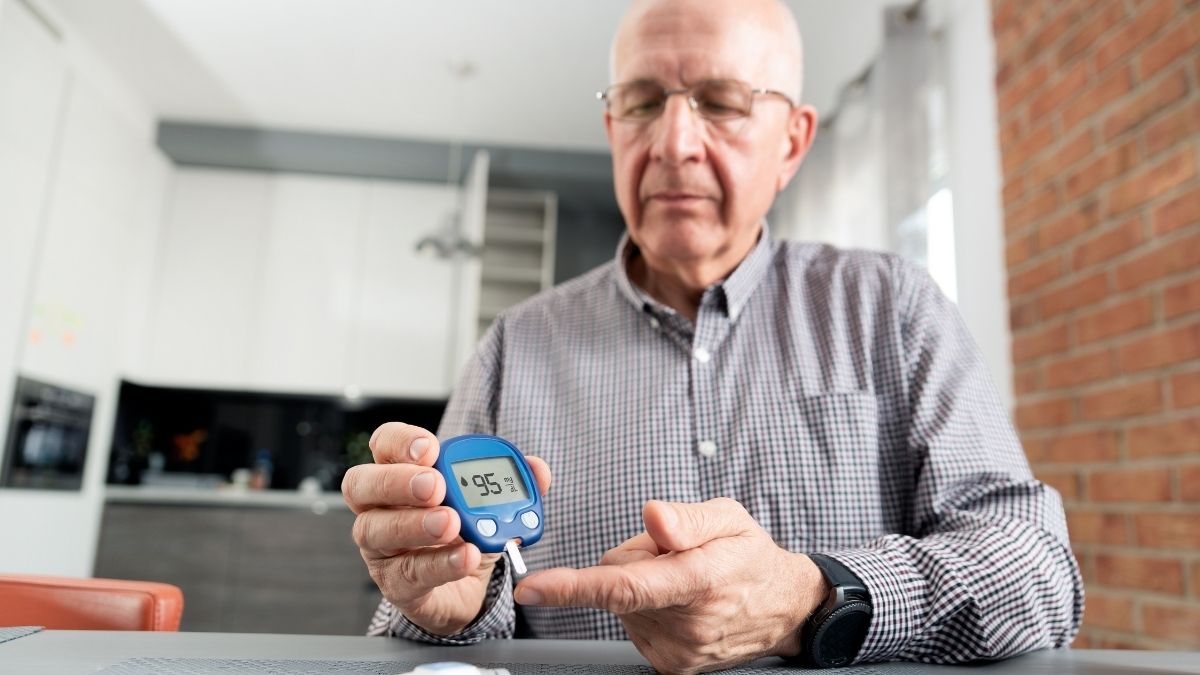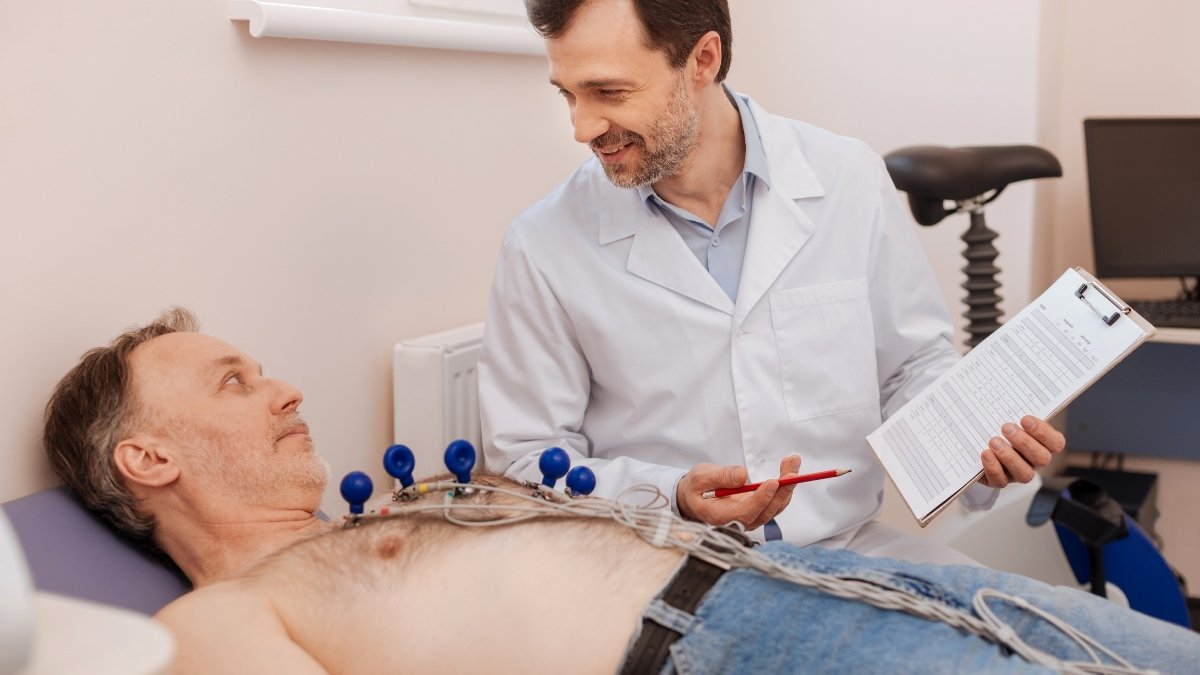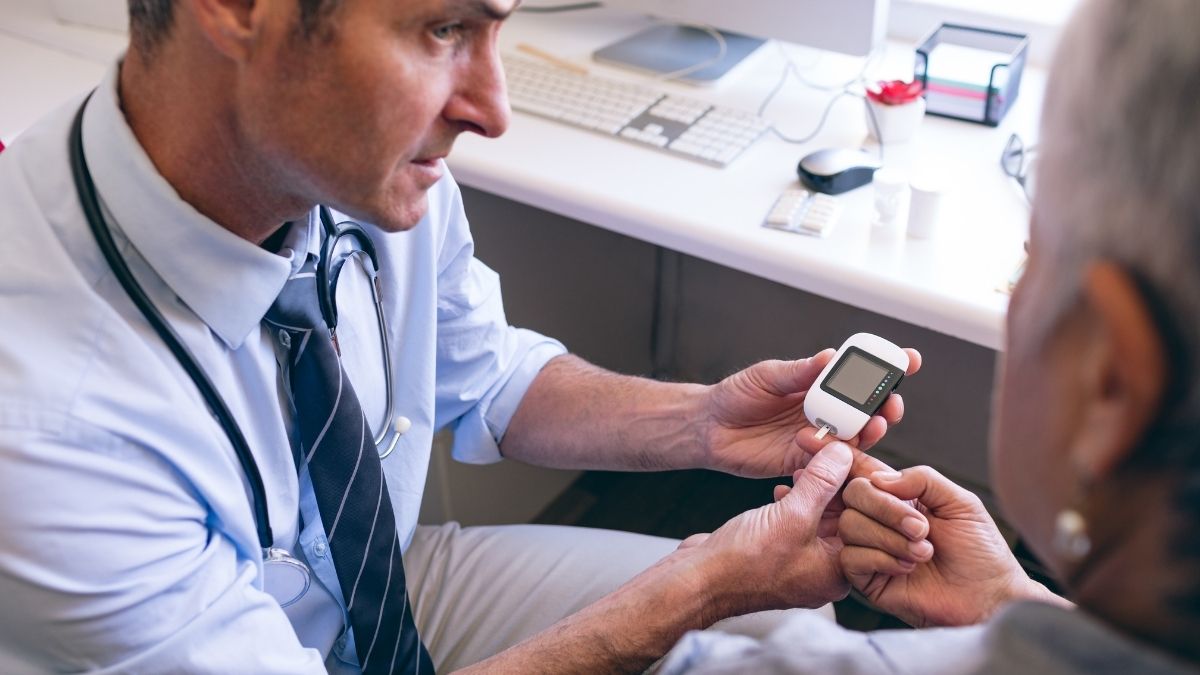Every 40 seconds, someone in the United States has a heart attack. But 8 out of 10 could have been prevented with something as simple as a routine doctor’s visit.
Most people wait until something hurts before they see a doctor. That’s the problem. Heart disease doesn’t announce itself with pain or warning signs. It builds silently over years, damaging your arteries while you feel perfectly fine.
By the time you notice symptoms, the damage is already done.
You don’t have to wait for a crisis. Regular checkups catch problems early, when they’re still easy to fix. A few simple tests can tell you if you’re heading for trouble—and give you time to change course.
In this guide, you’ll learn which screenings detect heart problems before symptoms appear, how often you need preventive appointments at each stage of life, and which specific tests identify risk factors years in advance. You’ll also see real examples of people who prevented heart attacks through early detection.
Knowing which check-ups to prioritize—and when—can add decades to your life. Here’s exactly what you need to know.
Why 80% of Heart Attacks Are Preventable
The 5 Essential Heart Health Screenings Everyone Needs

Your heart doesn’t send warning signals before something goes wrong. That’s why these five screenings matter. They catch problems early, when they’re easier to fix.
1. Blood Pressure Monitoring

This test measures how hard your blood pushes against your artery walls. A nurse wraps a cuff around your arm. It squeezes tight for a few seconds. Done.
What the numbers mean:
- Normal: Below 120/80
- Elevated: 120-129/80
- High: 130/80 or above
How often: Get checked every two years if your numbers are normal. If they’re elevated, check more often—your doctor will tell you when.
Who needs it most: Everyone over 18. But if you’re overweight, inactive, or have family history of heart disease, start earlier and check more often.
2. Cholesterol Panel

This blood test shows three important fats in your blood. You’ll need to fast for 9-12 hours before the test. The lab checks your LDL (the “bad” cholesterol that clogs arteries), HDL (the “good” cholesterol that protects you), and triglycerides.
Target numbers:
- Total cholesterol: Under 200 mg/dL
- LDL: Under 100 mg/dL
- HDL: 60 mg/dL or higher
- Triglycerides: Under 150 mg/dL
How often: Get a baseline test at age 20. Then retest every five years if results are normal. If your numbers are off, you’ll test more frequently.
Who needs it most: Anyone with a family history of heart disease or high cholesterol should start early—even in their teens.
3. Blood Glucose Screening

High blood sugar damages your blood vessels and heart over time. This simple blood test catches diabetes and prediabetes before they cause damage.
What the numbers tell you:
- Normal: Under 100 mg/dL (fasting)
- Prediabetes: 100-125 mg/dL
- Diabetes: 126 mg/dL or higher
How often: Start at age 35 and test every three years if normal. Test earlier and more often if you’re overweight or have risk factors.
Who needs it most: People who are overweight, inactive, or have family members with diabetes. If that’s you, don’t wait until 35.
4. BMI and Waist Circumference

Your doctor will measure your height and weight to calculate your BMI. They’ll also measure around your waist. Belly fat is especially dangerous for your heart.
What to watch for:
- BMI over 25 means overweight
- BMI over 30 means obese
- Waist over 40 inches (men) or 35 inches (women) raises heart risk
How often: Check at every annual physical.
Who needs it most: Everyone. But if your numbers are high, tracking them helps you see if lifestyle changes are working.
5. EKG or Stress Tests

An EKG records your heart’s electrical activity. A stress test shows how your heart handles exercise. You’ll walk on a treadmill while connected to monitors.
What it finds: Irregular heartbeats, poor blood flow, previous heart attacks, or blocked arteries.
How often: Most people don’t need these routinely. Your doctor will order them if you have chest pain, shortness of breath, or other warning signs. People over 40 who want to start intense exercise might need a stress test first.
Who needs it most: Anyone with symptoms like chest pain, dizziness, or heart palpitations. Also people with diabetes, high blood pressure, or strong family history of early heart disease.
These five screenings form your baseline. But how often should you actually visit your doctor?
Your Heart Check-up Schedule: Age-by-Age Guide

You know you need heart screenings. But how often? The answer changes as you age.
Here’s exactly when to schedule each test.
In Your 20s: Build Your Baseline

Your twenties are about establishing normal numbers for your body. You’re building a reference point for later.
What to get:
- Blood pressure: Every two years
- Cholesterol: One baseline test, then every five years
- BMI: Once a year at your regular physical
Think of these as your starting line. Your doctor will compare future tests to these numbers.
In Your 30s: Step Up Monitoring

Your risk starts climbing in your thirties. Time to check more often.
Updated schedule:
- Blood pressure: Every year now
- Cholesterol: Every five years if normal. Every 1-2 years if borderline
- Blood glucose: Get a baseline test at 35
- BMI: Annual checks
This is when lifestyle catches up with you. Late nights, stress, and poor eating habits start showing up in your numbers.
In Your 40s: The Critical Decade

This is when heart disease often starts developing silently. Many people have their first heart attack in their fifties—but the damage started in their forties.
What changes:
- Get all screenings every year
- Consider a stress test if heart disease runs in your family
- If any numbers creep up, your doctor might want to see you more often
Don’t skip appointments in this decade. What you catch now is easier to fix than what you ignore.
Age 50 and Beyond: Maximum Protection

After 50, you need the full monitoring package.
Your annual checklist:
- Complete blood work panel
- Blood pressure check
- BMI and waist measurement
- EKG every 2-3 years
- Stress test if you have symptoms or high risk
Your doctor might also suggest a calcium score scan. This special CT scan shows if calcium is building up in your arteries. It’s not for everyone, but it helps assess your risk level.
High-Risk? Follow a Different Schedule
Some people need more frequent checks, no matter their age. You’re high-risk if you have:
- Family members who had heart attacks before age 55 (men) or 65 (women)
- Diabetes
- Current smoking habit
- Obesity (BMI over 30)
- Previous abnormal test results
If that describes you, talk to your doctor about a custom schedule. You might need checks every 3-6 months instead of annually.
Make It Automatic
Print this schedule and keep it with your medical records. Better yet, set phone reminders for your next appointment before leaving the doctor’s office.
The biggest mistake? Thinking you’ll remember to schedule your next check-up. You won’t. Life gets busy. Before you know it, five years have passed.
Schedule the next one while the current one is fresh in your mind.
Early Warning Signs Your Check-up Might Reveal

Your test results come back “normal.” Your doctor says everything looks fine. But what if you’re missing something?
The most dangerous warning signs don’t show up as obvious red flags. They hide in the trends.
What Your Blood Work Is Really Telling You
A single cholesterol test at 195 looks normal. But if it was 170 three years ago and 180 last year, you’re on a bad path.
Watch for these patterns:
- LDL cholesterol rising steadily over 2-3 years
- HDL dropping even though your weight stays the same
- Triglycerides creeping up
- Fasting glucose moving from 90 to 95 to 98 (still “normal” but heading wrong)
Your body is sending signals. Most doctors only tell you if you’re out of range. But the direction you’re heading matters more.
Physical Measurements Show Changes Early
Numbers don’t lie. Your blood pressure at 128/82 is technically fine. But if it was 118/76 two years ago, something is changing.
Red flags in measurements:
- Blood pressure rising 5-10 points over a few years
- Waist getting bigger even if the scale doesn’t budge (belly fat is the dangerous kind)
- Resting heart rate climbing from 65 to 75 beats per minute
These shifts seem small. They’re not.
Why Patterns Beat Single Tests
Here’s what your doctor should be looking at: multiple borderline results together paint a clearer picture than one abnormal test.
Let’s say your cholesterol is slightly high, your blood pressure is “elevated,” and your blood sugar is on the high end of normal. Individually, none of these scream danger. Together? You’re at serious risk.
Add family history to borderline results, and the urgency jumps even higher.
A Real Example
Sarah’s cholesterol tested at 195—perfectly normal range. But her doctor pulled up her old records. Three years earlier, it was 170. That 25-point climb, combined with her dad’s heart attack at age 52, prompted action.
Her doctor started her on medication and a strict diet plan. Five years later, Sarah is healthy. Her doctor believes that early intervention prevented a heart attack.
The key? Her doctor looked at the trend, not just the number.
What to Do Next
Ask your doctor to show you trends across multiple visits. Don’t just accept “you’re in range” at a single appointment.
Request copies of your last three years of test results. Look for patterns yourself. Are numbers climbing? Even small increases matter.
If you see upward trends in cholesterol, blood pressure, or blood sugar—especially if heart disease runs in your family—speak up. Ask what the trend means for your risk level.
The warning signs are there. You just need to know where to look.
What Happens During a Comprehensive Heart Health Check-up

You’ve scheduled the appointment. Now what? Knowing what to expect makes the whole process less stressful and more productive.
A heart health check-up takes 15-30 minutes. Here’s how to prepare and what happens once you’re there.
Before You Go
Don’t eat or drink anything except water for 9-12 hours before your appointment. Your cholesterol and blood sugar tests need you to fast for accurate results.
Bring these with you:
- A list of all medications and supplements (including vitamins)
- Any symptoms you’ve noticed, even small ones
- Your family health history (who had heart disease, at what age)
Write things down. You’ll forget half of what you want to say once you’re sitting in the exam room.
What Happens First
A nurse takes your vital signs. Blood pressure, pulse, temperature, and weight. They’ll measure your waist too.
Then comes the blood draw. One quick stick gives your doctor information about cholesterol, blood sugar, and sometimes other markers. The whole thing takes two minutes.
The Physical Exam
Your doctor listens to your heart and lungs with a stethoscope. They’re checking for irregular rhythms, murmurs, or fluid buildup. They might press on your ankles to check for swelling.
Then comes the conversation. This part matters as much as the physical exam.
What Your Doctor Will Ask
Good doctors ask about more than just your chest pain. Expect questions about:
- Your energy levels and whether they’ve changed
- How well you’re sleeping
- Your stress at work or home
- What you’re eating lately
- Changes in your exercise routine
Answer honestly. “I’m fine” doesn’t help anyone.
Questions You Need to Ask
Don’t leave without asking these:
- “What do my numbers mean, and how have they changed since last time?”
- “What’s my 10-year risk of having a heart attack?” (There’s a calculator for this)
- “What’s the one change that would help my numbers most?”
- “When should I come back?”
- “At what point would you put me on medication?”
Write down the answers. You won’t remember them later.
Get Your Results in Writing
Request a printed copy of all your test results before you leave. Many doctors now offer patient portals where you can log in and track your numbers over time.
Keep these records. You’ll need them to spot trends and share information if you change doctors.
The appointment itself is quick. But what you do with the information afterward determines whether it actually helps you.
Common Myths About Heart Attack Prevention

You might believe things about heart health that simply aren’t true. These myths can cost you your life.
Let’s clear up the most dangerous misconceptions.
Myth 1: “I Feel Fine, So My Heart Must Be Healthy”
Reality: 75% of people having their first heart attack had no previous symptoms. Heart disease is called a “silent killer” for a reason—it builds up for years without warning signs.
Feeling good doesn’t mean your arteries are clear. Regular screenings catch problems before you feel anything wrong.
Myth 2: “I’m Too Young to Worry About Heart Disease”
Reality: Heart disease starts developing in your twenties and thirties. More people in their forties are having heart attacks now than ever before.
What you do in your thirties determines what happens in your fifties. Early detection gives you time to fix problems before they become emergencies.
Myth 3: “Heart Attacks Are a Man’s Disease”
Reality: Heart disease kills more women than all cancers combined. Women often have different symptoms than men—nausea, fatigue, and back pain instead of crushing chest pain.
Because women’s symptoms look different, many delay getting help. Regular screening becomes even more important for catching what symptoms might miss.
Myth 4: “My Parent Had a Heart Attack at 50, So I Will Too”
Reality: Yes, genetics load the gun. But lifestyle pulls the trigger.
You can’t change your DNA. You can change what you eat, how much you move, and whether you smoke. Regular monitoring lets your doctor step in before genetic risk becomes actual disease.
People with strong family histories who get aggressive treatment often do better than people with no family history who ignore warning signs.
Myth 5: “I Had a Check-up Two Years Ago and Everything Was Normal”
Reality: Your cholesterol can jump 40 points in a year. Your blood pressure can climb from normal to dangerous in 18 months.
A normal test two years ago tells you nothing about today. Your body changes. Annual monitoring catches those changes while they’re still easy to fix.
The most dangerous myth of all? Thinking these myths don’t apply to you.
They do. Schedule your screening.
Taking Action: Your Next Steps

You’ve read about screenings and schedules. Now it’s time to actually do something.
Here’s your action plan.
This Week: Make the Call
Pick up your phone right now. Call your primary care doctor and schedule a comprehensive heart health check-up.
If you’re overdue for screening, tell the scheduler you need all five essential tests: blood pressure, cholesterol panel, blood glucose, BMI measurement, and an EKG if needed.
Before you hang up, ask what you need to do to prepare. Most tests require fasting.
Gather your family health history too. Write down who had heart disease and at what age. Your doctor needs this information.
At Your Appointment: Get Everything
Request printed copies of all your test results. Don’t just listen to “everything looks fine.”
Ask your doctor to calculate your 10-year cardiovascular risk. There’s a formula for this. You deserve to know your number.
Schedule your next appointment before you leave. Don’t wait until you “remember” to call back.
After Your Visit: Track Your Progress
Create a simple spreadsheet or note on your phone. Write down your numbers: blood pressure, cholesterol levels, blood sugar, weight.
Set a calendar reminder for your next screening. Make it repeat annually.
Pick the top 2-3 recommendations your doctor gave you. Start with those. Don’t try to change everything at once.
Don’t Have a Doctor? Here’s How to Find One
Check your insurance company’s website for doctors accepting new patients. If you don’t have insurance, community health centers offer low-cost screening.
Telehealth works for initial consultations too.
What It Costs
Most insurance plans cover preventive care at 100%. You pay nothing.
Medicare covers many screenings annually.
Without insurance? A basic screening panel runs $100-300 if you pay yourself. Many clinics offer sliding scale fees based on income.
Stop reading. Start calling.
Conclusion
Regular check-ups aren’t just about catching problems. They’re about stopping them before they start.
Here’s the truth: 80% of heart attacks can be prevented through early detection and intervention. That simple screening appointment you keep putting off could save your life.
Remember these key points:
- Five essential screenings detect problems years before you feel sick
- Your screening schedule changes as you age
- The trend in your numbers matters more than any single test
- Prevention costs a fraction of what treating heart disease costs
Don’t wait for chest pain or shortness of breath. By then, damage has already happened.
Schedule your heart health check-up this week. Your future self will thank you for the decades of healthy living ahead.
The path to prevent heart attacks starts with regular checkups—and your next appointment.
Your heart beats 100,000 times every day, keeping you alive without you even thinking about it. It deserves the same attention you give your car’s oil changes—except the stakes are infinitely higher.
Make the call. Today.


